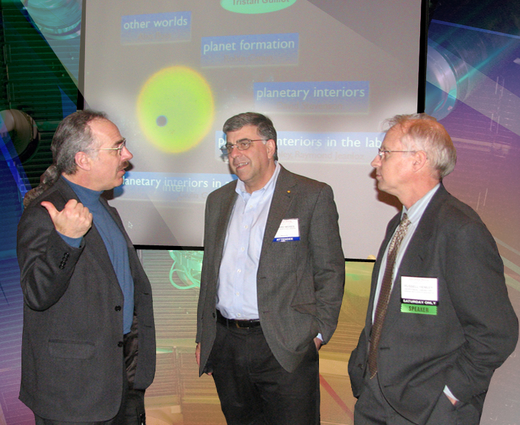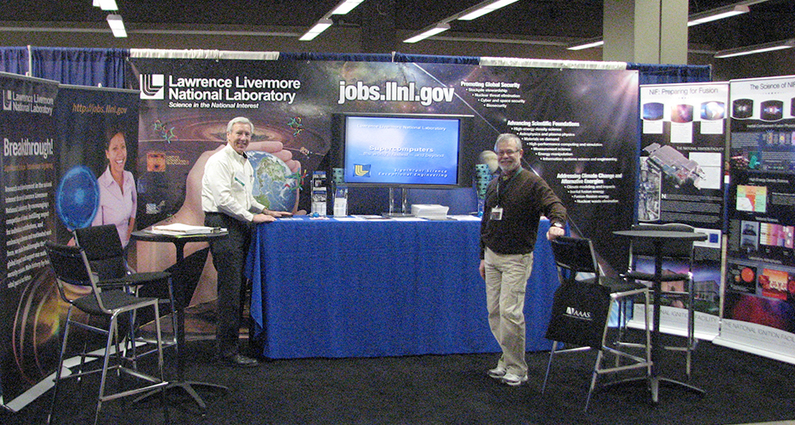NIF sparks scientific imagination at AAAS
CHICAGO — The Lab’s National Ignition Facility (NIF) took center stage Saturday afternoon at the American Association for the Advancement of Science's (AAAS) annual conference in Chicago.
LLNL’s Gilbert "Rip" Collins and Raymond Jeanloz of UC Berkeley, organized a three-hour symposium entitled "Origin and Evolution of Planets" featuring leading astrophysicists and materials scientists.
The six speakers described their individual research efforts, which stretch from finding Earth-like planets outside our solar system, determining how they were formed, estimating their sizes and physical makeup and attempting to predict the effects of gravity on the elements at the cores of such planets.
Many of the answers, the panelists said, will be provided by NIF.
In the past decade or so, more than 300 planets have been found orbiting nearby stars. Current detection techniques limit most discoveries to giant gas and ice planets at least as large as Jupiter.
But astronomer Alan Boss of the Carnegie Institution of Washington believes that Earth-sized planets probably exist as well in nearly every solar system.
According to Boss, in order to locate them, we need to develop more technically advanced optical and radio telescopes, as well as space probes such as NASA’s Kepler mission, which is scheduled to launch early next month, and the French-led CoRoT (COnvection ROtation and planetary Transits) satellite that has been in a polar orbit around Earth since 2006.
Boss, author of the recently published "The Crowded Universe," assured the audience that not only will new techniques permit the discovery of many more planets such as ours, but he predicted that a high percentage of them will contain some sort of life, although not necessarily with Earth-like intelligence.
In addition to probing the potential for life on other planets, researchers also are interested in the chemical composition of the planets themselves. But relying on conventional computer simulations is difficult when they must deal with gravitational effects that equal billions of earth-atmospheres. It’s unclear how materials such as iron, carbon and silica, as well as gases like hydrogen, helium and nitrogen react under such pressures.
That’s where NIF comes in.
NIF’s 192 laser beams will be able to focus their intense energy on a tiny target, and mimic the gravitational pressures found at the core of planets.
According to UCB’s Jeanloz, such conditions can cause diamonds to melt into liquid metal, and helium to conduct electricity.
To date, experiments have been limited to mechanical efforts involving instruments that squeeze materials between layers of diamonds, as well as laser systems far less energetic than NIF. Experiments in the next few years on NIF will provide results with far greater detail than ever before.
Former LLNL researcher Giulia Galli, now with UC Davis, described studying light elements such as hydrogen, oxygen and hydrogen, using quantum mechanical computer simulations in conjunction with NIF, to predict the conditions at the cores of the largest planets in the solar system compared with Earth.
At a morning briefing for the news media prior to the symposium, Collins described LLNL’s role in the planetary research, saying, "NIF opens up a new era, since it is the first testbed we have ever had to study evolutionary models of the planets."
"We’d love to uncover some new exotic material," he said.
LLNL also was represented in the AAAS exhibit hall by a booth highlighting the Lab’s accomplishments.








